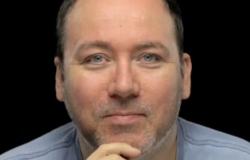
A lightweight like Ryan Gosling, this week’s action hero The Fall Guy, didn’t stand a chance among the action movie behemoths that stomped around in the 1980s. They did not dance in the Mickey Mouse Club, like Gosling, but came from martial arts – Chuck Norris, Jean-Claude Van Damme, Steven Seagal – or bodybuilding – Arnold Schwarzenegger, Sylvester Stallone. These top-heavy anabolic meat pies gave the depressed America under President Reagan a much-needed shot of patriotism by taking bloody revenge on celluloid against internal and external enemies: mafia and youth gangs, communists, Vietnamese, Latin American scum. Heroes with a body of granite and a soul of stainless steel who ended each killing spree with a sneering one-liner.
In his entertaining book The Last Action Heroes paints Nick de Semlyen, journalist at the British film magazine Empire, their period in the style of cultural critic Peter Biskind, but unfortunately without his finesse, depth and erudition. Biskind created school by describing the rise and fall of a film wave by profiling a group of defining filmmakers: the New Hollywood of the 1970s in Easy Riders, Raging Bulls for example.
De Semlyen describes the right-wing wave of revenge and action films of the eighties through an ensemble of action heroes. Superstar Sylvester Stallone, scriptwriter and secret intellectual, takes the lead and is also the villain of the story: a neurotically aggrieved, jealous vain. Highlight in Stallone-bashing is an anecdote about a child actor who met him on the set of Rambo III brutally corrects, after which Stallone walks grimly to his camper and his assistant returns a moment later: “Sly has a great idea! Why doesn’t that child die in this scene?”
For what it’s worth, Hollywood loves tall tales. In any case, Stallone is fundamentally changing American cinema. His boxing movie Rocky in 1976 was a nail in the coffin of the artistically high-quality, but depressing ‘New Hollywood’. Together with Jaws and Star Wars cares Rocky Hollywood started investing its money in B-movies in the late 1970s: action, horror, sci-fi. Rocky Balboa offers hope by standing up tough against a boastful black world champion and in the process gives shape to white self-pity and revanchism. The underdog Rocky transforms into a super champion in later films. Stallone’s second hero John Rambo follows a similar trajectory: the traumatized, cornered Vietnam veteran of First Blood later turned into a ruthless killing machine that still won the war in Vietnam and Afghanistan.
Stallone’s rival, the Austrian bodybuilder Arnold Schwarzenegger, is the hero in De Semlyen’s story: a blunt, sexist, but always cheerful bodybuilder with so much self-confidence that he seems to have no ego. Bob Rafelson deploys his colossal torso in 1976 Stay Hungry as a ridiculous ‘special effect’ with gay connotations. Ten years later, Schwarzenegger, with an accent and all, is Hollywood’s most unlikely A-star thanks to barbarian Conan, killer robot Terminator and half a dozen militaristic male putters.
The Semlyen describes the rivalry – and the dirty tricks – of Stallone and Schwarzenegger and also introduces a procession of lesser gods: the meek Christian Chuck Norris, the optimistic vain Jean-Claude Van Damme, the sinister brute Steven Seagal. They dominated Hollywood for a while.
Initially, their bloodlust underpins Ronald Reagan’s artificial patriotism – the president seems half in love with Stallone and chats endlessly with him on the phone. But when America’s self-confidence is sufficiently restored and the detente with the Soviet Union begins after 1986, grimness and triumphalism go out of fashion again. The new type of action hero appears to be the quick-witted TV star Bruce Willis, who in 1988 with… Die Hard scores a huge Christmas hit: an action comedy about police officer John McClane, who bleeds, flees, cries and survives through improvisation. In the 1990s, action heroes shrank back to Willis’ human size and tormented anti-heroes such as Mel Gibson or Nicolas Cage became fashionable, as did sweatlessly flexible, technologically savvy types who know how to use the Internet: Tom Cruise, Keanu Reeves.
In 1989 Tim Burton set up with Batman the cartoonish superhero is also on display: his reign of terror only really begins in the 21st century. The double-muscled meat pies of the eighties have become vaguely ridiculous dinosaurs. Their Jurassic Park is after 2012 film series The Expendablesin which they perform their old tricks in varying ensembles, now with jokes about hernia and Viagra.
In retrospect, it is striking how ridiculous and trashy their action films were. They deserve a more in-depth study than the very entertaining one The Last Action Heroes.
The Last Action Heroes: The Triumphs, Flops, and Feuds of Hollywood’s Kings of Carnage, Nick de Semlyen. 352 pages €29.37
To share
Email the editor
Tags: anabolic action hero dominated Hollywood #80s thankfully replaced real people
-




